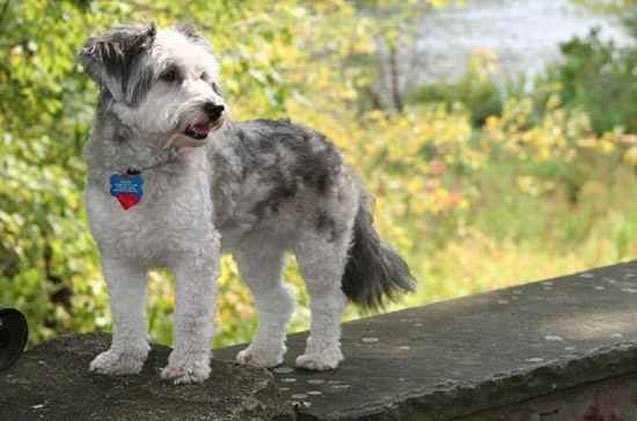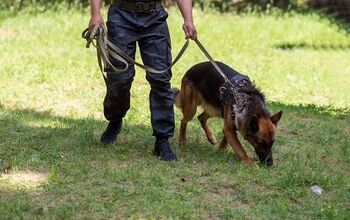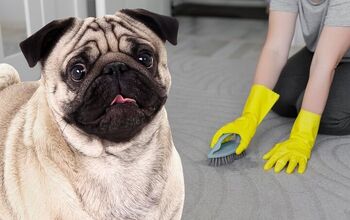Sheltidoodle


About Sheltidoodle
The Sheltidoodle is also known as the Sheltipoo, but regardless of what you call this pooch, one thing is certain: this hybrid breed is popular for many reasons, and once you meet one of these special canines, you’re sure to fall in love.
Keep reading to learn more about the Sheltidoodle to determine if this particular dog breed is the one that you have been searching for.
The Sheltidoodle is a cross between a purebred Shetland Sheepdog and Poodle.
The Sheltidoodle is a designer crossbreed from the United States.
The Sheltidoodle is a cross between a purebred Shetland Sheepdog and Poodle.
Always select a high quality canine-appropriate dog food for your pet, as that will ensure he gets the right nutrition for health and vitality. Once you have the right food, you can provide your dog with 2-3 cups of dry food per day, divided up into two or more meals.
If you’d like, you can also provide your Sheltidoodle with some high quality canned dog food, but adjust the amount of dry food accordingly so that your dog doesn’t overeat and gain too much weight.
Sheltidoodles are also inclined to listen and to obey, and they are highly intelligent.
The Sheltidoodle is a breed that is easy to train because these dogs are eager to please you. They are also inclined to listen and to obey, and they are highly intelligent. Plus, they like spending time with their human family for any reason, so training is just another opportunity to be with you.
You should find that your Sheltidoodle learns rather quickly, especially when compared to other dog breeds, because he doesn’t need as much repetition. By remaining firm, fair, patient, and consistent, and by incorporating positive training methods that use rewards, treats, and praise, you will achieve great results.
A medium-sized breed, the Sheltidoodle weighs between 30 and 60 pounds.
If you are in search of a dog that is playful and funny and really likes being around people, look no further than the social and smart Sheltidoodle. These loving and loyal canines will get along with everyone, including children, other dogs, and other animals. Even when strangers are present, these great pets remain calm and relaxed.
Sheltidoodles can even be trained to work as therapy dogs. They could also learn to bark whenever they notice suspicious activity, so they have the potential to be good watchdogs, too.
Because the Sheltidoodle is a hybrid canine breed, it may inherit some health issues that commonly affect its parent breeds. Bear in mind, though, that there’s no way to predict an individual dog’s long-term health, and there is no guarantee that your dog will inherit any health problems from his parents.
Some of the conditions that can affect a Sheltidoodle because of its parent breeds include epilepsy, Cushing’s disease, bloat, Addison’s disease, patellar luxation, skin ailments, eye conditions, hypothyroidism, Von Willebrand’s disease, hip dysplasia, dermatomyositis, Legg-Calvé-Perthes disease, and Collie Eye Anomaly (CEA).
The Sheltidoodle has an average lifespan of 12 to 15 years.
The Sheltidoodle is an energetic breed that needs positive outlets for that energy. Therefore, it is important to give your dog plenty of toys to remain occupied and happy while spending time indoors. But you should also take the time to exercise your dog outside every day as well.
If you go on trips, don’t hesitate to take the Sheltidoodle with you, as he will thoroughly enjoy the experience. While at home, allow your dog to run and play in your enclosed backyard if you have one, or take him to the dog park. A couple of walks or jogs every day will also keep your dog happy and healthy.
The Sheltidoodle is a breed that is easy to train because these dogs are eager to please you.
The Sheltidoodle is not recognized by the American Kennel Club, as it is considered to be a hybrid breed. However, this breed is recognized by the American Canine Hybrid Club (ACHC), the Designer Breed Registry (DBR), the Designer Dogs Kennel Club (DDKC), the Dog Registry of America, Inc. (DRA), and the International Designer Canine Registry (IDCR).
A Sheltidoodle might have a Poodle-like coat, or the coat might be more like the Shetland Sheepdog. Generally, the coat can be described as wavy, medium or long, thick, and coarse.
If the coat is more like a Poodle’s, you should brush your dog daily, and a groomer should trim the fur every few weeks. Also, the coat will be low shedding.
On the other hand, if your dog has more of a Shetland Sheepdog’s coat, it will shed more and a moderate amount of grooming will be required. Brushing your dog two or three times a week will help keep it clean and smooth.
Sheltidoodle puppies are small and delicate, so they should be handled with care. Teach your kids to be gentle with these dogs as well. Then start training your puppy early so he will learn the rules of the house right away.
Once your pet is comfortable around his human family, he can also be socialized to get along with other people and other animals. Doing so will ensure your pooch will grow up to be happy and confident.
Photo credit: mum2ims/Flickr

Lisa Selvaggio is a freelance writer and editor, and our resident cats-pert, with certifications in pet nutrition and pet first aid. She enjoys producing content that helps people understand animals better so they can give their pets a safe and happy home.
More by Lisa Selvaggio
























